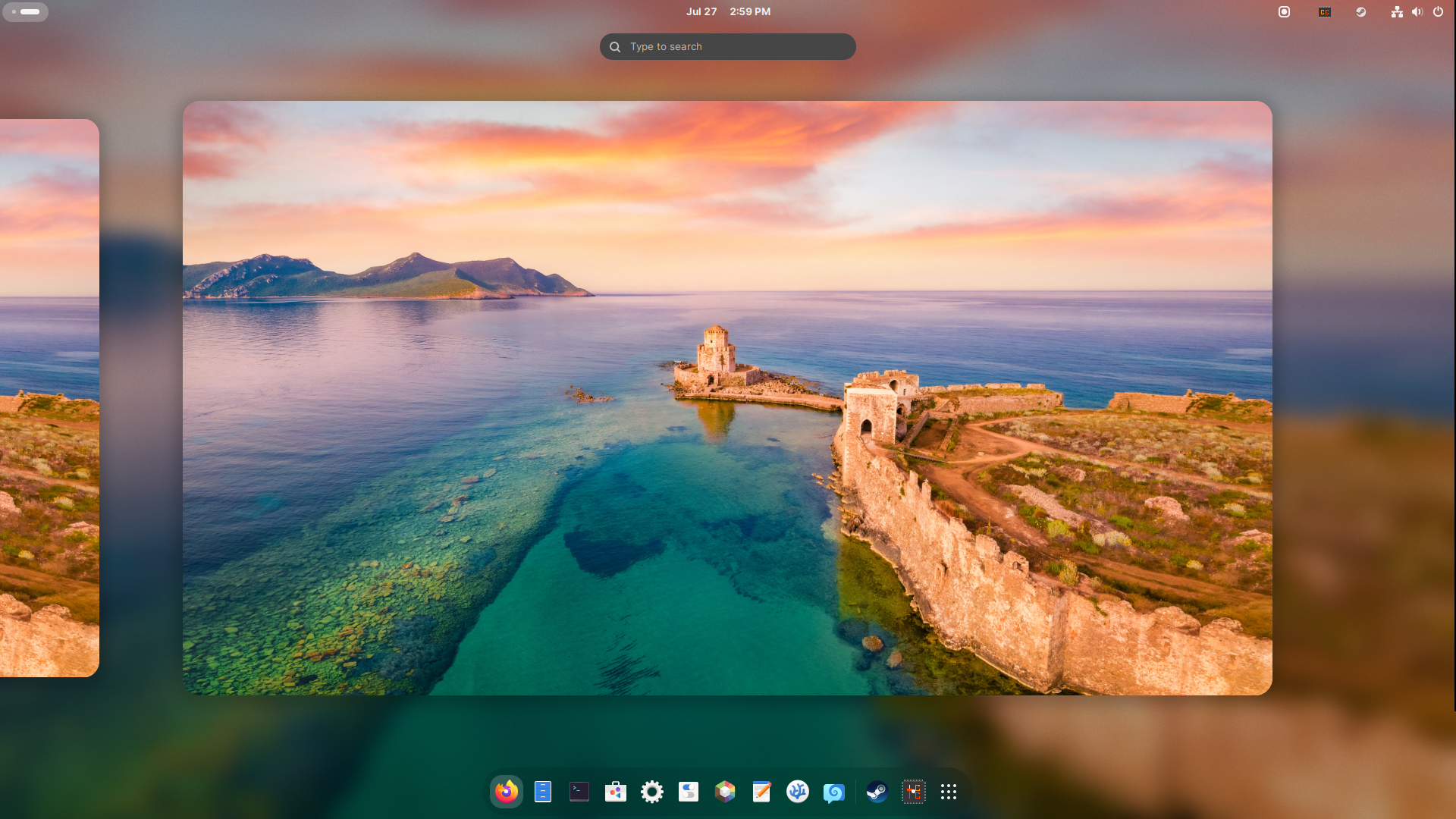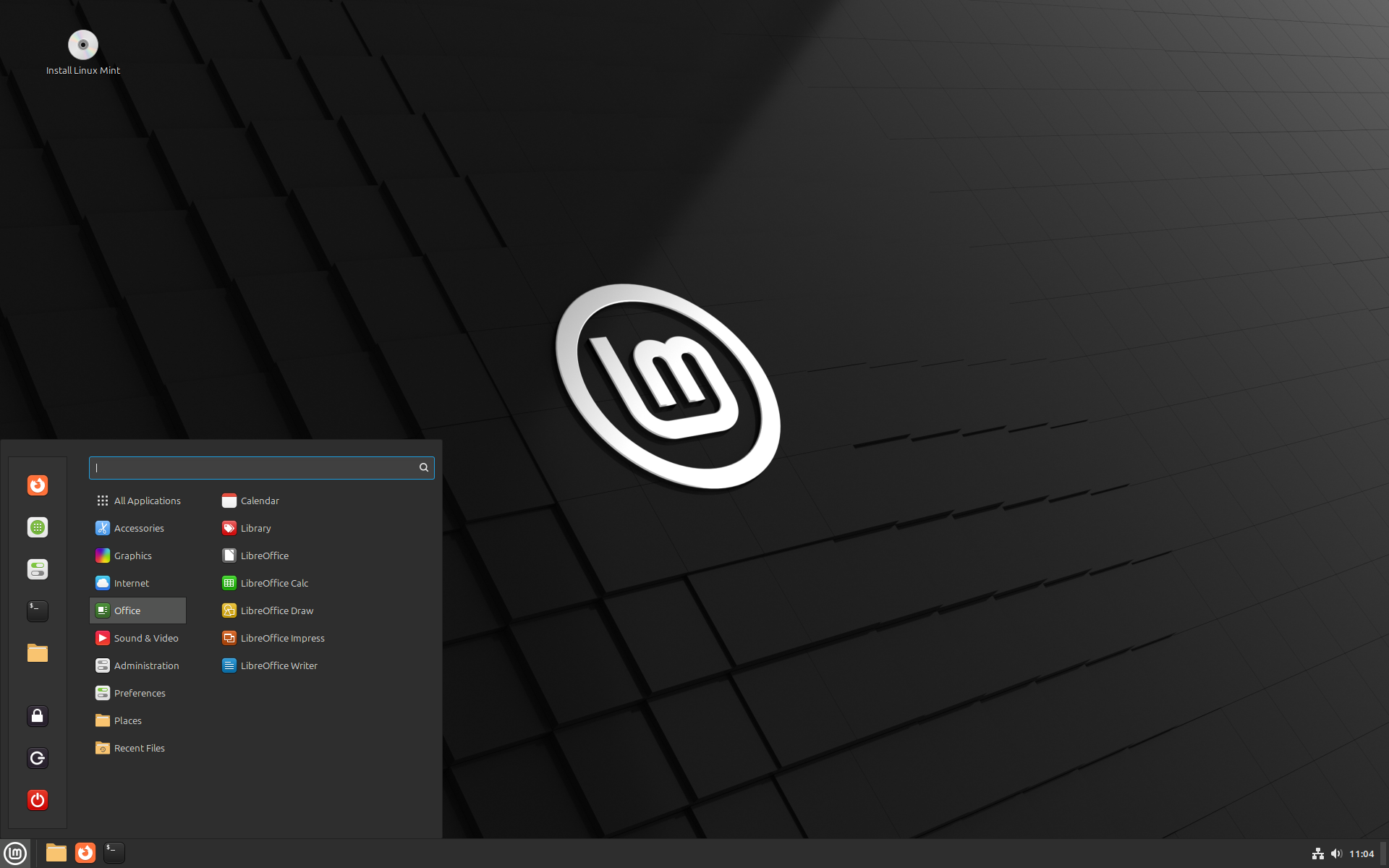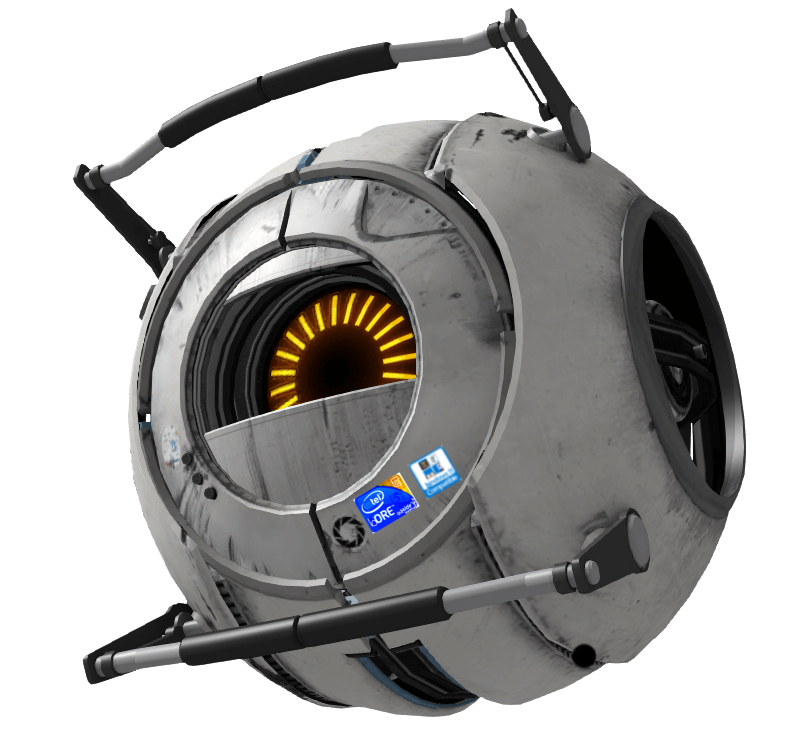- cross-posted to:
- linux@programming.dev
- linux@lemmy.ml
- cross-posted to:
- linux@programming.dev
- linux@lemmy.ml
The Linux Mint team has just released Linux Mint 22, a new major version of the free Linux distribution. With Windows 10’s end of support coming up quickly next year, at least some users may consider making the switch to Linux.
While there are other options, paying Microsoft for extended support or upgrading to Windows 11, these options are not available for all users or desirable.
Linux Mint 22 is a long-term service release. Means, it is supported until 2029. Unlike Microsoft, which made drastic changes to the system requirements of Windows 11 to lock out millions of devices from upgrading to the new version, Linux Mint will continue to work on older hardware, even after 2029.
Here are the core changes in Linux Mint 22:
- Based on the new Ubuntu 24.04 package base.
- Kernel version is 6.8.
- Software Manager loads faster and has improved multi-threading.
- Unverified Flatpaks are disabled by default.
- Preinstalled Matrix Web App for using chat networks.
- Improved language support removes any language not selected by the user after installation to save disk space.
- Several under-the-hood changes that update libraries or software.
I recently gave thr debian based Linux Mint a try and I was pleasantly surprised.
I might ditch ubuntu for this.
Just curious, if you’re already using Ubuntu why try LMDE rather than the default version?
The default version of what?
Of Linux mint. The Cinnamon edition that pulls a lot from Ubuntu as well as Debian. That’s what got upgraded to version 22, along with the could other flavors. But Linux Mint Debian Edition (LMDE) does not follow the same versions & release schedule.
Oh, like that.
Well, mainly because I’m getting a little fed up with how Ubuntu forces snap on to you. I just want to install the apt versions of programs but it won’t do that out of the box.
And I know you can change that and remove snap but I am a little done with always having to mod the shit out of my linux installations to get them to work the way I like.
Other than that I am pretty satisfied with how Ubuntu works out of the box and has pretty good hardware support. I was basically looking fot an Ubuntu without snap.
Ubuntu without snap is exactly what Mint Cinnamon is! You get to lean on all those popular Ubuntu resources and use apt and all that good shit.
It is? I did not know that! Thank you very much for enlightening me! I’ll be giving that a try now.
Glad to help! They do include flatpak stuff in the software manager if you use that, but they are marked as such.
I checked this morning and I have no flatpaks installed and snap/snapd itself isn’t even installed on my system.
I hope Clem enjoys his successes on the backs of the many contributors he’s ostracized over the years.
Could you elaborate on this? I’m still distro shopping and know basically nothing about Mint’s development history.
Sure he’s burned bridges with me and other people I’ve talked to. They have a habit of reverting people’s work and have a lot of back door conversations. Just because it’s open source doesn’t mean it’s collaborative or that anyone has any input in the actual result, regardless of how much work they contribute towards it themselves.
They also cut a lot of corners and do sloppy work, and when called out on it, that’s when they start ostracizing people. They work in bad faith in many situations with outsiders.
Which is fine we all like different things but what I said was true, take it or leave it, and you guys can fanboy downvote me and I can move on and not actually care either way.
For the people that really care about this distribution, they’re only doing a disservice to themselves by being in denial about Linux mint disappearing tomorrow if a single person goes away, because that’s the state of things.
Thanks for the explanation. I’m sorry you had a bad experience working with them. Unfortunately, bad management and petty people problems don’t go away just because it’s open source. :(
Thank you Mint team, you rock!
Okay so as someone who’s getting fed up with Windows and Microsoft as a whole, I’m interested in Linux.
I just wanna game and watch videos. Video calls n such with friends. Nothing too spectacular.
Now can someone who doesn’t work on computers for a living, or even isn’t a hobbyist programmer. Someone like me, who couldn’t write a line of code on their own, answer me how difficult would it actually be?
My biggest fear is that I’m convinced by all the tech nerds here who can of course run this no problem and don’t see why a beginner would struggle, and then my anxiety shoots through the roof while I have a breakdown because I just wanted to get home from work and relax and suddenly my PC is a paperweight.
Dead easy with Mint. I’ve been running it full time on my laptop for months now and my wife only recently came to find out it wasn’t windows when I was explaining Linux to her (and she’s not a technical personal - she’s the person who yells at TV remotes when they don’t work). Installation is super easy, much like installing windows - answer a few questions and off it goes. You can even install it alongside windows and pick what one you want to run on boot (I did this because of a couple windows-only apps I can’t ditch just yet). If you can figure out Lemmy, Mint will be a breeze too.
Do you sacrifice anything performance-wise by having the dual-boot?
After not even two years my beast pc I have for work has started giving me BSODs, apps crash, etc. Tried a bunch of stuff to troubleshoot hardware side, software side, short of buying new expensive parts like ram etc to test, or reinstalling the OS.
I do mostly video editing, sound editing, and Photoshop+Lightroom mainly, with some 3D, vector and stuff like that here and there. I think most of my software runs on Linux except the Adobe stuff. I’m curious to try Linux see if it would solve some of the problems but afraid that even the dual booting stuff would still be a pain if I need to switch between PS+LR to other tools a lot.
The other reply answered your performance question already, but to address your concern about switching between OS’s for different program needs - you could always run windows in a virtual machine on Linux and just use Windows and the needed Windows software that way without having to fully reboot into Windows. This is the direction I plan on eventually going someday with my own setup and using Tiny11 for a lightweight windows VM.
I’m gonna give it a go after this current job is delivered!
no perf. loss with dualbooting, just takes more space.
I use mint btw 🌿
Removed by mod
Can you recommend a bot that will contact that number incessantly?
I made the switch to mint a few months ago. Its astounding to me just how slowly windows boots and I never noticed until I made the switch.
You got me, Lemmy. I caught the Linux from you and I can’t go back.
Mint boots SHOCKINGLY fast, like sub 2 seconds, on a couple of systems I have. Its basically as fast as “booting” one of my old Commodore computers!
Did not see “faster than Commodore 64!” coming!
Did not see “faster than Commodore 64!” coming!
As an American I am required by our Constitution to use bizarre units of measure. 😊
Last I checked, one desktop computer with Mint installed = seventeen TRS-80s.
That’s equal to 68 TI-84s!
Booting from a full power off state?
Reboot but a cold start isn’t exactly fair because the Commodore doesn’t have a BIOS / UEFI splash screen. Although now that you bring it up I’m slightly interested in timing it and seeing exactly how fast I can make the cold start process.
<2 seconds from powered off to being able to start to open e.g. a web browser?
If so that is indeed truly shocking. Curious what your stopwatch says from powered off to a homepage loaded ready to use.
<2 seconds from powered off to being able to start to open e.g. a web browser?
So that’s time on a reboot as measured from when the UEFI splash goes away to being presented with the logon screen. That feels roughly the same as Commodore’s “Ready” prompt, at least to me. Although the case can be made that the desktop should be up and loaded too. I’d have to enable “auto logon” to get that one.
Curious what your stopwatch says from powered off to a homepage loaded ready to use.
As I said to @Liz@midwest.social I’m starting to wonder just how fast I can make it with a bit of work. The hardware is nothing special but after the UEFI screen goes away GRUB comes and goes so fast it’s unreadable and then…you’re just looking at the logon screen.
Right now that PC is tied up running TestDisk and it’ll likely take another 2-3 days to finish. Once it’s done and I can reboot I’ll do some measuring and tweaking.
Linux Mint is just great :)
Agreed. I managed to get my grandpa onto Linux using Mint on his old computer. He said the interface resembled classic Windows and was up and running in less than five minutes. I just had to show him how to use the software manager and that’s it.
It’s also got so many features that just make sense, like extending to separate monitors being automated, or when you download multiple files they’re automatically zipped to conserve space.
I did love Mint.
I got my aunt’s laptop on Mint. Was unusable with Win 10, like click the start button, wait 4 minutes and then the start menu opens. Took right to it, especially since she’s been using an Android tablet for just about everything so she knew what an app store was. “Linux calls it a software manager” was all the training required.
these days I recommend fedora kinoite to beginners from windows.
their os-tree package manager sucks it somtimes will refuse to uninstall stuff
You’re not supposed to use that, and in fact, when i give it to beginners, i don’t mention the package manager, I just use discover with flatpaks.
oh,but flatpacks are missing native hosting on some browsers but its mostly not a big problem and not all apps are on flatpack
Nearly everything the average person needs is in flatpak.
I don’t know what you mean by “native hosting”
Nearly everything the average person needs is in flatpak.
True tho
It’s a good distro and it is a lot harder to break on accident, but there are a lot more minor kinks than fedora workstation. It can also get confusing for newcomers on the somewhat regular occasion that you need a non-flatpak package.
Can you give some examples of these kinks? I haven’t had any issues giving it to beginners.
Just from my own experience, many flatpak apps such as Steam, VSCode, or Kdenlive have a lot of issues, and many other flatpaks are maintained by third parties with poor quality control. This isn’t Silverblue/Kinoite’s fault, but it is still an issue that affects it. For certain machines where drivers aren’t included by default, it requires a lot more troubleshooting to install them compared to Linux Mint’s driver manager, or even just copying a few commands from the internet on a distro like Fedora.
Ah, the driver thing is mitigated by me doing the installation for them.
As for flatpaks having issues, that makes sense, i try to stick to verified flatpaks and do tell them to avoid unverified ones. I just really haven’t had these problems, have you had them recently or historically?
Linux Mint was my gateway drug to linux. It’s simple and powerful! Now I’m a happy KDE user, but you never forget the first love
I ran a dual-boot for a month and a half when news about Windows Recall broke, but unfortunately, my Nvidia setup experienced a lot of bugs and proved to just be too incompatible.
So, when I upgrade to a new computer later this year, I’m going to make this machine a Linux-only machine with a different distro, and then have my other PC for all my gaming needs.
You probably needed to download some drivers for your gpu
I tried several.
None of them functioned well, and over that period of time it became clear it was a system issue. But, I know there are other distros that are more Nvidia-friendly, and when the time comes, I’ll use one of those.
Thankfully there’s O&O ShutUp to turn off Windows tracking for now.
Plasma is quite nice now.
It really is. I don’t get the love for the tabletish gnome interface everyone is using.
I get why some people like it, for sure. I’m just surprised so many “power users” seem to.
Power users probably just use hotkeys and type, Gnome is attractive and stays out of your way. That said - I like Plasma, too. That’s the fun of Linux, it’s so customisable to each person’s needs.
It has a unique workflow which clicks for people like me, even if they’re on a desktop. It encourages workspaces by making creating and switching between them instant and seamless, and i like seeing all of my windows at once by just pressing the super key.

With Overview you can get something very similar in Plasma, though you’d need to change the default shortcut to open it by just pressing the super key.
However it’s not as quick, and it’s not considered the main method of navigating your windows. AFAIK you can’t switch workspaces by scrolling there or have your apps list visible.
Oh I love your wallpaper, do you have a link to somewhere I can download it?
Sure, I use an extension to get daily wallpapers, but here’s the image for that day:

KDE has continually felt less solid to me when I’ve used it, and the reviews I’ve seen of it seem to note that is still the case.
Less solid how? I use it everyday and don’t really notice any problems
Yeah, it’s fantastic. I don’t know how I spent so much time in gnome before finding KDE, I can’t imagine going back. I guess there could be something better out there, I’d love to know about it if there is.
Gnome is just perfect for laptops and convertibles. I can quickly navigate it using the touchpad and super key. It also has better touch screen support, and with one extension (hide top bar), literally all of the screen real estate is available for your work. Hit the super key or 3-finger-swipe up and the UI appears. 3-finger-swipe sideways to switch to another virtual desktop. All my programs are full-screen and on their own desktop. The animations are so smooth, it’s a joy to use.
And the Gnome apps are just simple and reduced to what you actually need.On a desktop PC I prefer Plasma for its customizability and smaller UI elements. It’s better for navigating with a mouse (although you can also turn it into a Gnome-clone or a tiling WM just with built-in options). And the KDE apps feel more “professional”, with lots of additional functionality, options and settings.
What distro are you running with plasma? I’ve had issues with instability on KDE neon, so I’m planning to switch to a different distro. Plasma is still nice, so I’m looking for inspiration for what to mix and match.
Kubuntu is what I use
OpenSUSE Tumbleweed.
I’m really inexperienced with Linux but I’ve become interested since getting a steamdeck which uses KDE for its desktop, which I’ve enjoyed—so how do KDE and mint compare?
KDE: traditional desktop environment with focus on lots of customization, options, and features. Often aimed more towards enthusiasts or everyday users who want the latest features.
GNOME: non-traditional desktop focusing on simplicity. Designed to be used a very specific way to maximize productivity. Often aimed more towards corporate or professional users.
Mint uses their own desktop environment (cinnamon) which is somewhere between the two.
All of these are nice in their own way, you just need to find which one you like best!
I use Plasma on Mint. Love my setup
Oh, neat, I installed Mint on my home machine literally 3 days ago without knowing Mint 22 was coming. Time to upgrade lmao
Tbf, most distros work on older hardware.
Eh, depends how much older. My daily is a Thinkpad x201, and while I love Linux Mint, every once in a while I get curious about other distros. However, as many times as I’ve tried, there’s a bunch of distros whose LiveUSBs just won’t boot (for example Pop! OS).
I wish I could get an x201 with an identical form factor and keyboard, indicator lights, etc, but otherwise upgraded components (cpu/ram/display/ports). That is my dream.
I also have an x201, but it runs too warm and too noisy for me to keep up with it. I now have an M1 Macbook which I use Asahi Linux and macOS on with about a 50/50 split. But the x201 feels better in the hand and on the desk.
100%. I know this computer is getting to the end of it’s life. I’ve upgraded it as much as possible (SSD, 8GB of RAM, new battery) and it still lives almost completely on it’s dock.
I’ve previously looked into converting it to a USB or bluetooth keyboard, and now I’m curious if I could convert it to a KVM console for a SteamDeck. I’m not quite sure yet if this idea is brilliant or brain-dead (probably both).
EDIT: Instead of KVM console, I think the more modern term would be a Lapdock.
I think, realistically, anything up to 10 years ago can run most distros. Some better than others, of course, because of the DE load.
I’ve got kde neon on a 2013 MacBook Air and it’s great. I also have put Ubuntu budgie and SDesk on an old HP Chromebook with 4gb of ram. And, obviously the 16gb disk is crippling, but it runs better than expected haha.
Just switched after seeing how much of my Steam library I could play on my Deck. Just have to switch back for BF5 sometimes and I don’t miss Windows at all. Very nice experience.
How much does it play and what about a GPU in terms of compatibility?
Nvidia is less consistent, but there are distros that do the work to make it work reasonably. You do want to check for how well a distro supports nvidia before choosing it if that’s you card, but my experience has been fine.
The biggest limitation game wise is multiplayer games with invasive anticheat, but you can check specific titles on protonDB to see how well they work. Non steam games (again, excluding anticheat) also mostly work, but other launchers can involve more setup compared to just using steam’s built in translation.
If it runs on proton it runs on mint
The only issues I’ve had are the companies who refuse to enable the Linux versions of their Anti-Cheat, everything else has run and run better than Windows
I use a 2080ti and even with that negative it only took about 15 minutes of fiddling to get my GPU working just fine in everything
Short answer because I’m drunk but I have to admit I’m somewhat older so I play a lot of indie titles. And one of the few triple A games that I play (BF5) forces me to boot into Windows but that is a fraction of what I play.
I use Discord, Steam and Firefox mainly and don’t do much productivity wise so probably a biased experience.
My 6750XT was automatically installed and had no work from it whatsoever.
That’s quite similar to me. I have an Xbox for Game Pass (Fortnite with the missus and whatever goes on there that looks interesting); a Mac for work/studies/games which are compatible and not intensive; and a Deck for other stuff, so I can see how much is compatible. Every time I think ohh, I’d like to play that (properly), the thought of going back to Windows makes me baulk. What mid-to-lower-range GPU should I be looking at, AMD also?
My old Microsoft Surface is running much better now that it’s running Linux Mint.
I’m curious about these, do the surfaces still require the use of (or benefit from) custom kernels?
AFAIK they still benefit from custom kernels, but don’t require them. I believe support continues to make it into master, so it likely won’t be the case forever.
excellent, glad to hear
Mint is so user friendly



























